Deep analysis of the peripheral equipment of the sound system "four big names"
The four important components of the peripheral equipment of professional audio sound reinforcement system are: frequency divider, exciter, equalizer and compressor.
Of course, these previously emerging hardware devices are now concentrated in a digital audio processor. Here, split and talk about their respective functions.
Frequency divider
The task of the frequency divider is to divide the audio signals of different frequency bands, and the divided signals are output to the subsequent stages for amplification, and finally sent to the speakers of the corresponding frequency bands (high, medium and low units) for playback. High quality audio playback usually requires crossover processing.
There are two types of dividers:
1, power divider
2, electronic crossover
Power divider: located behind the power amplifier, set inside the speaker, through the LC filter network (ie LC filter principle), the power audio signal output by the power amplifier is divided into bass, midrange and treble, respectively sent to the respective frequency bands speaker. The connection is simple and convenient to use, but power consumption, audio valleys will occur, cross distortion will occur, its parameters are directly related to the speaker impedance, and the impedance of the speaker is a function of frequency, which deviates greatly from the nominal value, so the error Also larger, not conducive to adjustment. 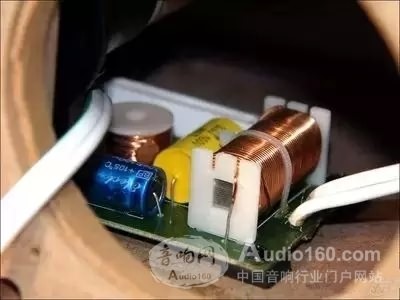
Electronic crossover: A device located in front of the power amplifier that divides the audio signal before power amplification. After frequency division, it is amplified by separate power amplifiers to drive the corresponding speaker unit. Since the signal current is small, it can be realized by a smaller power electronic active filter, which is easier to adjust, reduces power loss, reduces interference between speaker units, and has small signal loss. However, since each channel uses an independent power amplifier (for the amplification characteristics of the frequency band), the cost is high and the circuit structure is complicated.
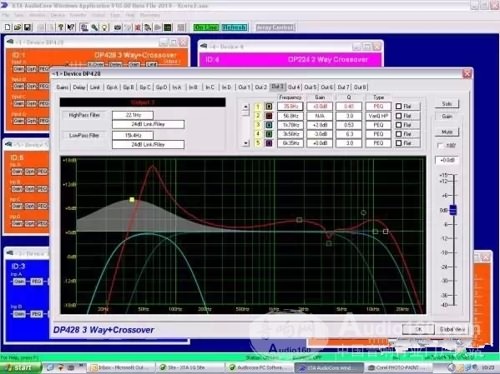
Exciter
The exciter is a harmonic generator that uses human psychoacoustic characteristics to modify and beautify the sound signal. By adding various methods such as adding high-frequency harmonic components to the sound, it is possible to improve the sound quality, the timbre, and the penetration of the sound, and to increase the spatial sense of the sound. 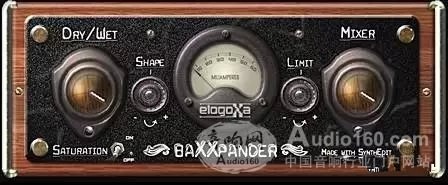
Many exciter products not only create high-frequency harmonics, but also have functions such as low-frequency extension and music-style preset parameters, which make the bass effect more perfect and the music more expressive.
Using the exciter during mixing can also improve the clarity, intelligibility and expressiveness of the sound, making the sound more pleasant, reducing the listening fatigue and increasing the loudness. Although the exciter only adds about 0.5dB of harmonic content to the sound, actually it sounds like the volume is increased by about 10dB, which makes the auditory loudness of the sound increase significantly.
Not only that, but the use of the exciter can also make the sound positioning clear and hierarchical.
Since the audio signal loses high-frequency harmonic components during transmission and recording, high-frequency noise occurs, and the excitation device can effectively compensate the signal. The adjustment of the exciter requires artificially discriminating the sound quality and tone of the system, and then adjusting according to the subjective hearing evaluation.
Equalizer
An equalizer is an electronic device that can independently adjust the amplification or attenuation of various frequency components of an audio signal. It compensates for the defects of the speaker and sound field by adjusting various frequency components of the audio signal, and modifies the sound source and other special purposes.
Equalizers fall into three categories:
1, graphic equalizer
2, parametric equalizer
3, room equalizer
Graphic equalizer: also known as chart equalizer, through the distribution of push-pull keys on the panel, can intuitively reflect the adjusted balance compensation curve, the improvement and attenuation of each frequency at a glance, it uses constant Q-value technology, each frequency The point is provided with a push-pull potentiometer, and the frequency bandwidth (Q value) of the filter is always constant regardless of the frequency of raising or attenuating a certain frequency.  The commonly used professional graphic equalizer is to adjust the signal of 20Hz-20kHz into 10 segments, 15 segments, 27 segments and 31 segments. In this way, people can select different frequency equalizers according to different requirements. The frequency points of the 10-band equalizer are distributed at octave intervals. The 15-band equalizer is a 2/3 octave equalizer. Usually, when the requirements are not very high, the 31-band equalizer is 1/3 octave. The equalizer is used in applications where fine adjustment and compensation are required. The graphic equalizer has a simple structure, is straightforward, and is widely used.
The commonly used professional graphic equalizer is to adjust the signal of 20Hz-20kHz into 10 segments, 15 segments, 27 segments and 31 segments. In this way, people can select different frequency equalizers according to different requirements. The frequency points of the 10-band equalizer are distributed at octave intervals. The 15-band equalizer is a 2/3 octave equalizer. Usually, when the requirements are not very high, the 31-band equalizer is 1/3 octave. The equalizer is used in applications where fine adjustment and compensation are required. The graphic equalizer has a simple structure, is straightforward, and is widely used.
Parametric equalizer: also known as parametric equalizer, an equalizer that can be finely adjusted for various parameters of equalization adjustment. The parameters of the adjustment include frequency band, frequency point, gain and Q value, etc., can beautify, modify the sound, and make the sound ( Or music) is more distinctive and colorful, and achieves the desired artistic effect. 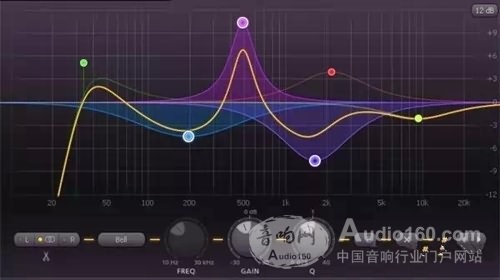 Room equalizer: An equalizer used to adjust the frequency response characteristic curve in a room. Since the decorative material has different absorption (or reflection) amounts of different frequencies and acoustic resonance due to the influence of the normal resonance (standing wave), the room must be used. The equalizer objectively compensates for frequency defects due to sound build-up. The finer the frequency band is, the sharper the adjusted peak is, that is, the higher the Q value, the finer the compensation during adjustment. The thicker the frequency band is, the wider the adjustment peak is. When the sound field transmission frequency characteristic curve is more complicated, it is more difficult to compensate. .
Room equalizer: An equalizer used to adjust the frequency response characteristic curve in a room. Since the decorative material has different absorption (or reflection) amounts of different frequencies and acoustic resonance due to the influence of the normal resonance (standing wave), the room must be used. The equalizer objectively compensates for frequency defects due to sound build-up. The finer the frequency band is, the sharper the adjusted peak is, that is, the higher the Q value, the finer the compensation during adjustment. The thicker the frequency band is, the wider the adjustment peak is. When the sound field transmission frequency characteristic curve is more complicated, it is more difficult to compensate. .
Compressor
The compressor is a general term for compressors and limiters. It can compress or limit the dynamics of audio electrical signals to a certain range.
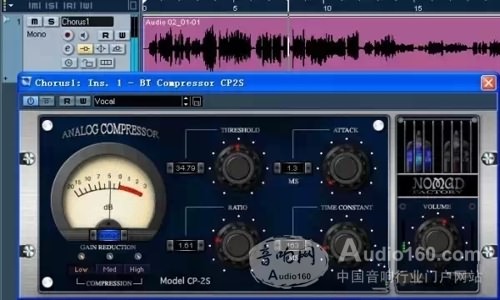
The design principle of the compressor is a variable gain amplifier, and its amplification factor (gain) can be automatically changed according to the strength of the input signal, which is inversely proportional. When the input signal is higher than the set threshold (threshold), the higher part will be compressed according to the set ratio. When the compression ratio exceeds 10:1, the compressor becomes the limiter, so the limiter actually The top is a special case of the compressor. The limiter's compression ratio is 10:1-20:1, which is equivalent to setting an insurmountable upper limit value for the signal.
The pressure limiter can make the audio signal change smoothly and unobtrusive, play the role of large pressure and small, effectively prevent over-excitation distortion, and limit the peak value of the large-level signal to protect the equipment of the latter stage from damage. By setting its noise gate parameters, the noise level can be well reduced and the signal-to-noise ratio of the signal transmission channel can be improved. In the landscaping of the modified sound, the sound source (vocal, musical instrument, etc.) can be made strong and the details are clear and identifiable.
Switchgear Circuit Breakers,Park Detroit Switchgear,Powergo-C40,Intelligent Secondary Equipment
Shandong Shunkai electrical equipment co., LTD. , https://www.chinasdsk.com